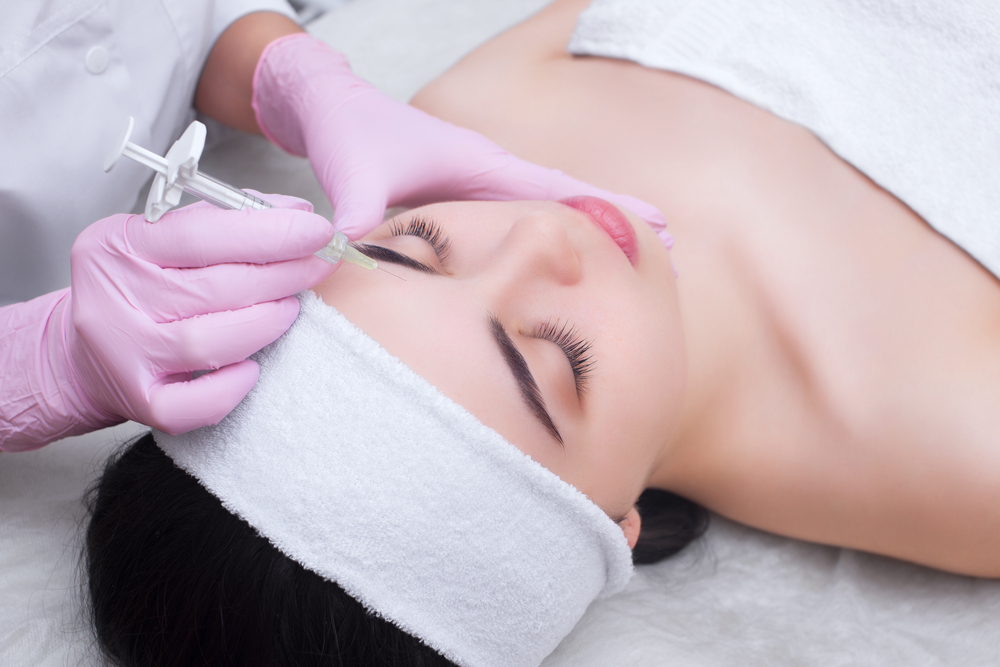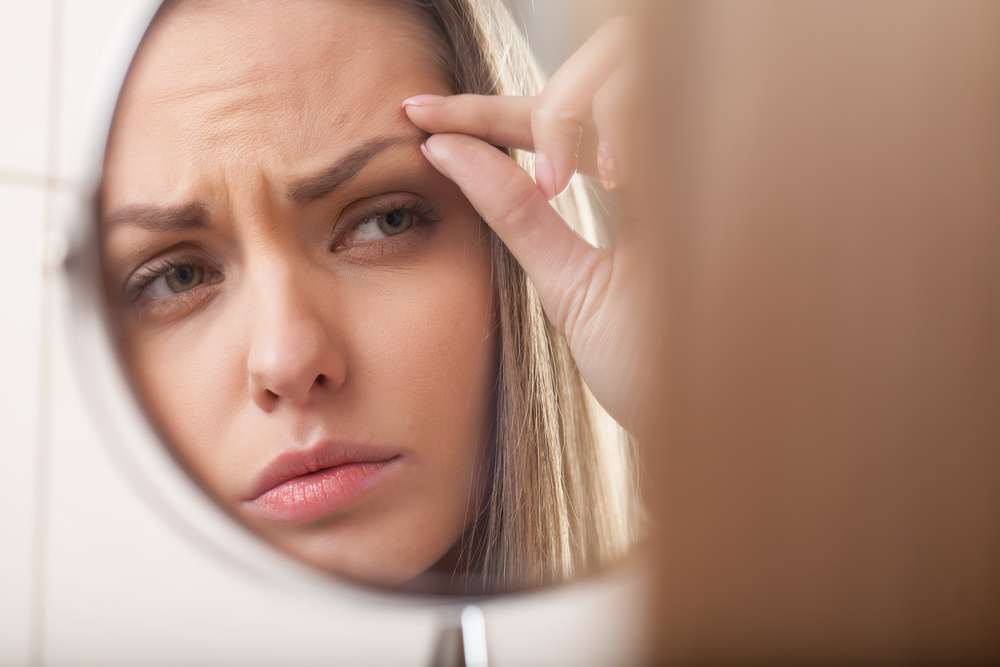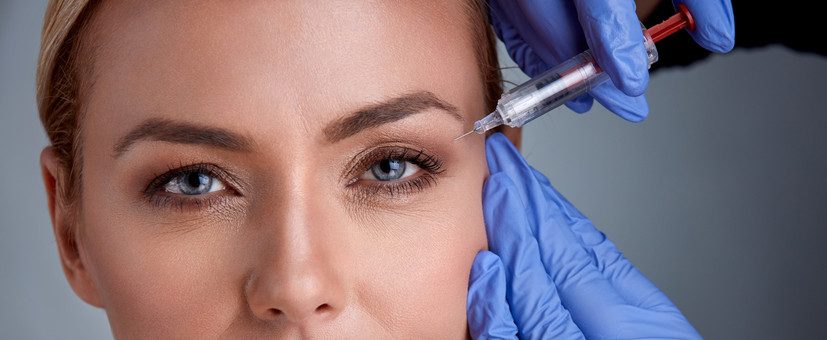- Botox can be used to treat wrinkling, creasing and other conditions affecting the chin.
- It works by relaxing the chin muscles, which allows the overlying skin to smoothen.
- In some extreme cases, Botox injections can be supplemented with chin fillers.
- There are rarely any side effects, and when they do occur, they are very minor.
The mouth is not only the prime focal point of the lower face, but also the most dynamic, with forty muscles working overtime to convey our emotions. Botox and other cosmetic treatments targeting these muscles can result in significant aesthetic improvements.
Also known as chin-tox, Botox injections to the chin can help give it a smoother, less dimpled appearance.
What Chin Issues Can Botox Fix?
Botulinum toxin A, marketed under the brand names Botox, Dysport, and Xeomin, is the quickest and simplest treatment available to correct the appearance of dimples (mentalis strain) or wrinkling, as well as creping of the skin, by relaxing the musculature in the chin area.
Peau d’Orange and Chin Dimpling
Most patients seeking treatment are looking to eliminate a rough texture that has developed on the front area of their chin due to a hyperactive mentalis muscle. This condition is called crêping, but is most commonly referred to as an “orange peel” (hence the name) or “golf ball” chin.
Crêping is usually caused by repeated contractions of the mentalis (chin muscle), which leaves lots of thin or cross-hatched lines across the surface of the chin.
Botox injections to the area will relax the muscles, causing the contractions to appear less pronounced.
The treatment is very effective. In most instances, the frequency of the injections can be reduced over time while retaining the quality of the results.
Mental Crease
The mental crease is the indentation that appears between the lower lip and the chin, forming near the top of the mentalis muscle. It is usually a single deep groove that runs horizontally, but it can also appear as a combination of lines across the area.
A pronounced crease can cause a puckering effect around the mouth, which some people feel makes them look older or gives them a “witch-like” chin.
Botox is the first line of treatment for this condition, producing excellent results when injected into the area around the mentalis muscle. Providers must be careful not inject too much Botox into the area in order to avoid negative side effects from occurring, such as losing the ability to pucker one’s lips.
In some cases, when the mental crease is very pronounced, it may be necessary to combine Botox with an advanced dermal filler such as Radiesse, Juvederm Ultra Plus or Perlane.
Chin Wrinkles
Wrinkles or depressions around the jawline and chin area can be corrected with Botox. Patients also often seek Botox treatment for “marionette lines” and nasolabial folds, commonly known as “smile” or “laugh lines.”
Chin wrinkles are usually fairly fine and shallow, which makes them very easy to treat with Botox. The treatment stops unwanted movements of the chin, softening the creases over time until they eventually disappear completely.
Depending on the depth of a patient’s wrinkles or the presence of acne scars, practitioners may choose to combine the Botox treatment with a facial filler like Restylane or Belotero.
When choosing a provider it’s important to be sure that your dermatologist or plastic surgeon has been certified by a reputable professional body, and that the Botox injections you will be receiving are FDA-approved.
How Does the Treatment Work?
The purpose of the treatment is to produce a controlled weakness of the chin muscles by injecting small, strategically placed amounts of Botox in the area.
Typically, up to ten Botox units are used across four injection points on the chin and mouth. The injections are placed superficially to avoid any deep nerves, as Botox impacts the nerve endings to prevent molecular signals from being transmitted to the muscle. Deep injections can negatively impact chin and lip movements, which can result in an unnatural “frozen chin.”
Once the treatment is over, you will be able to leave the clinic immediately and return to your normal day-to-day activities.
Patients usually don’t notice any changes for the first few days after a treatment, but will see a gradual improvement of their chin’s appearance over the following two weeks.
You may be asked to return to the clinic sometime during the first few weeks post-treatment so your practitioner can assess the results and address any concerns you may have.
The treatment is temporary, with effects usually fading over a period of three to four months, although they can sometimes last longer than that. Eventually the chin area will return to its original appearance, at which time the treatment can be repeated.
For more severe cases of dimpling or wrinkling, it is not uncommon for cosmetic doctors to combine Botox with hyaluronic acid fillers in order to achieve the desired aesthetic outcome.
An experienced, skilled provider will be able to discuss these options with you and assess whether you are a good candidate for this kind of treatment.
How Much Does Chin-Tox Cost?
The cost of this treatment will vary depending on the clinic that you attend, its geographical location, and the experience of the injector.
Typically, Botox injections cost between $250 and $450 per treatment.
However, should you require injectable fillers in addition to Botox, prices can range from $400 to $1000, with the average cost being approximately $550 per syringe.
What Are the Potential Side Effects?
As with all medical procedures, there are potential side effects which should be considered before undergoing any treatment.
That being said, serious side effects from Botox are very rare.
Asymmetrical Results
Because the muscles in the chin are very small and positioned close together, injections occasionally impact the wrong areas. This can cause the lower lip to look asymmetrical. Should this occur, the asymmetry is typically balanced with further treatments.
Bruising and Swelling
Small blood vessels may be damaged when the botulinum toxin is injected, causing minor bruising around the injection site. This is a common side effect with all injection treatments. The resulting bruises are usually quick to heal and inconspicuous, with minimal swelling.
Pain
Most patients experience little to no pain. Injections are placed using very fine needles and as such, patients will only feel a slight pinching sensation as the treatment is administered. There are also topical numbing creams that can be used prior to treatment, although these are usually unnecessary.
To maximize your chances of having a successful treatment, it’s important to retain the services of an experienced, board-certified practitioner.
What Are the Alternatives to Chin Botox?
If you don’t feel that Botox is right for you, there are other non-surgical options available:
- ThermiTight uses radiofrequency energy to gently heat the skin’s surface, causing some of the collagen to shrink, which allows the skin to tighten up and become smoother. This treatment usually requires three to six applications.
- Microneedling is a minimally invasive skin rejuvenation procedure that uses very fine needles to make superficial punctures on the surface of the skin. This prompts the skin’s natural healing process to correct inconsistencies by encouraging collagen production.
- Cosmetic acupuncture is being hailed as a new, holistic alternative to Botox. This treatment aims to restore the balance of energy flows in the body while encouraging the natural production of collagen in the skin.









